We’re living in an exciting time where the options for disabled people and cyclists who’ve had a change of circumstances, or those wanting ‘companion’ cycling, are greater than ever.
This guide will help you get an understanding of the world of adaptive bikes, from adult trikes to motor-assisted recumbents. It also explains how you can make use of adaptive bikes to get out or continue cycling and how you can buy an adaptive bike.
What is an adaptive bike?
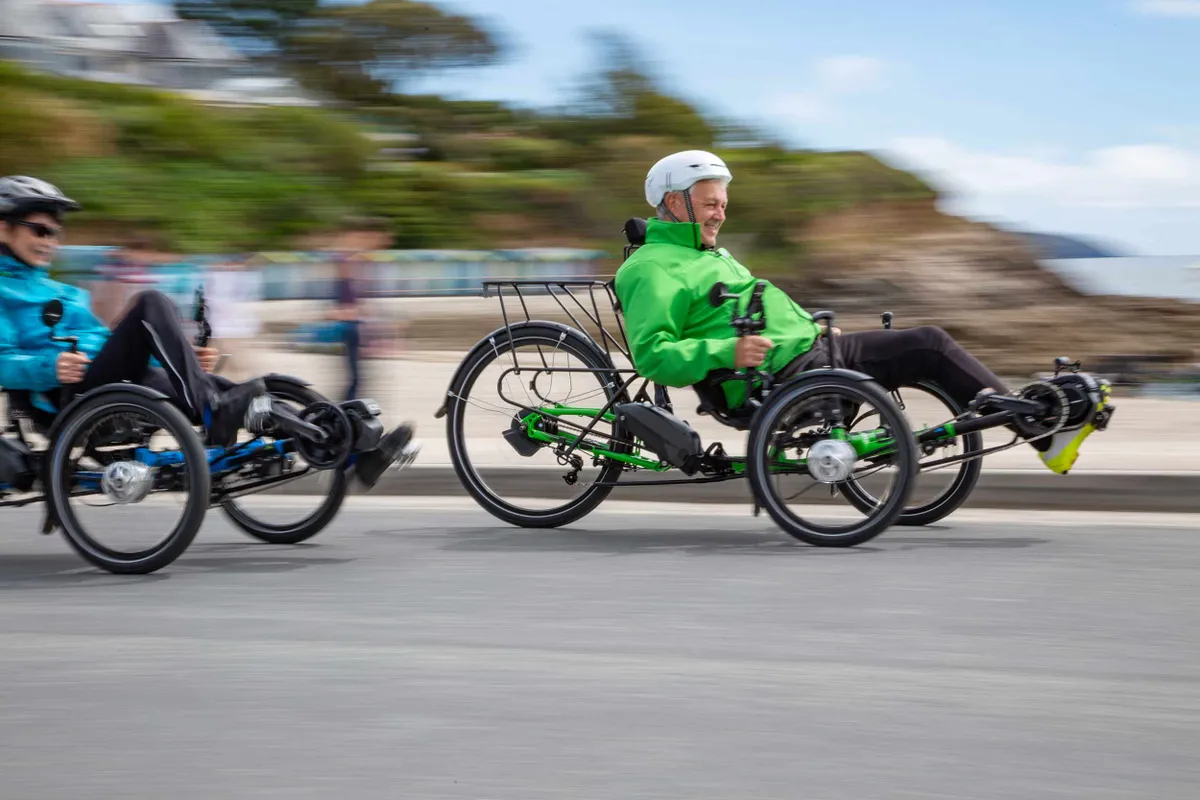
The simple answer is a bike that makes the act of cycling easier for the rider, whatever their individual needs – whether that’s changes to an existing two-wheel bike or a need-specific bike or trike.
Choosing the right adaptive bike depends largely on your primary need. For example, those with visual impairment may find a tandem great, while those with balance issues could struggle on one.
Likewise, a rider with spinal cord injuries affecting their lower body would not be able to ride a standard recumbent bike, but they may be able to enjoy a handcycle. People may also want to ride together for physical or cognitive reasons.
Adult trikes
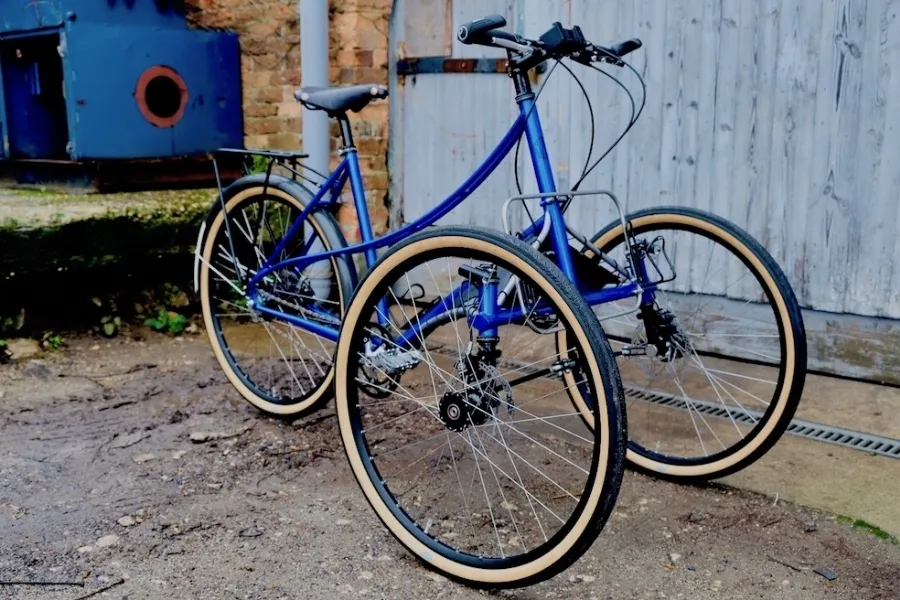
As the name suggests, tricycles (or trikes) are three-wheeled bicycles. Adult tricycles tend to have a low step-through, an upright seating position, two wheels at the rear and space behind for large amounts of storage.
A wide range of cyclists choose to ride trikes. James Walker, founder of Jorvik Tricycles in York, explains: “It’s not just those with disabilities. Eight per cent of people in the UK have never learned to ride a bike, so for them, a trike can be the perfect way to get cycling.”
It’s important to pay attention to wheel size when looking for a trike. Smaller wheel sizes offer greater stability because of their lower centre of gravity. They also offer greater manoeuvrability.

Some trikes come with electric assistance and offer a ‘walking pace’ function so you can continue moving without pedalling.
Manufacturers are now offering trikes with different rim diameters, tyres and suspension, making them suitable for off-road riding.
While most trikes are ‘delta trikes’, with one wheel at the front and two wheels at the rear, there are also ‘tadpole trikes’, with two wheels at the front and one at the rear. Tadpole trikes are more stable, corner more securely and are easier for riders with visual impairments.
Electric bikes
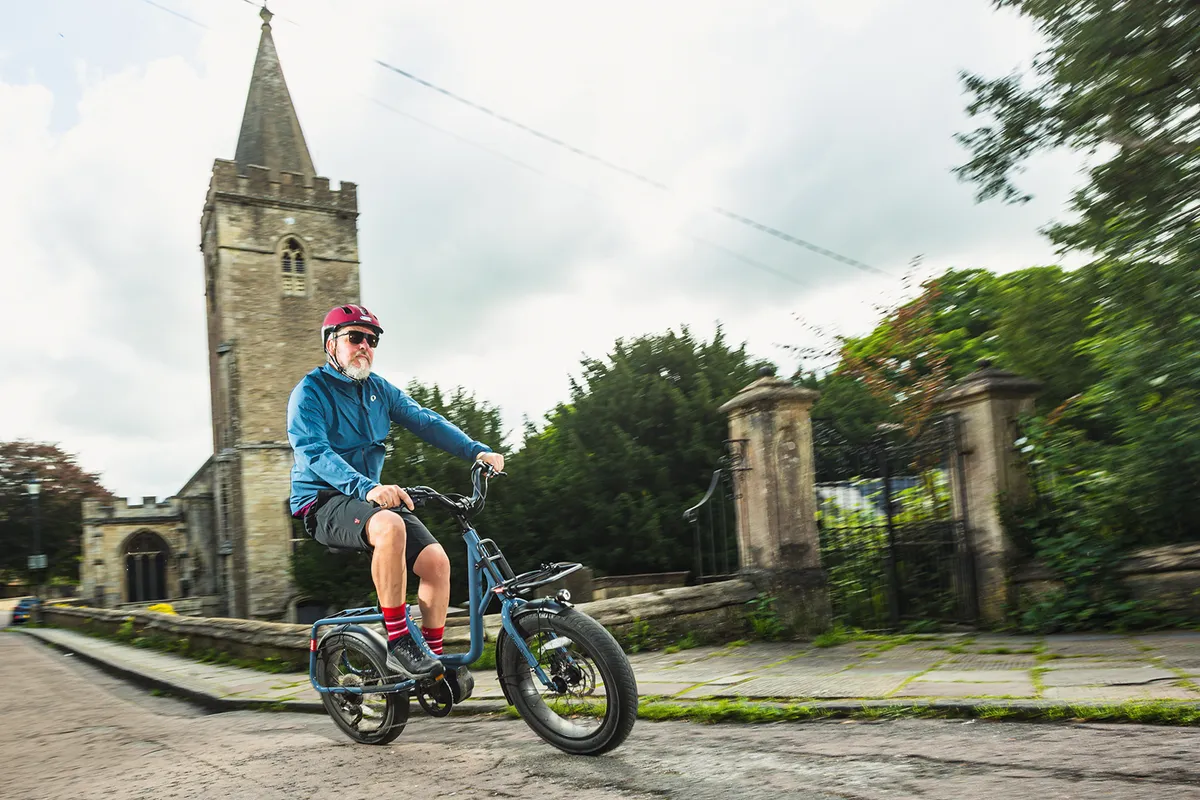
Electric bikes have a battery and a motor to provide additional power. This means you can cycle further than on a non-assisted bike.
These bikes are good for those with balance and coordination issues. The motor assistance means they require less force through the pedals to start moving, meaning your weight is less likely to move off centre.
Due to their motors and batteries, electric bikes tend to be heavier than other bikes. This can make them harder to mount and manoeuvre at low speed.
One way of making getting on an electric bike easier is to look for one with a low step-through.
Another thing to consider with electric bikes is their battery range. Different bikes will come with different size batteries and consequently will be able to go different distances between having to recharge them. So it’s a good idea to ask yourself how far you’ll likely want to go and how long it takes to fully charge the bike’s battery.
It’s possible you might need a different seating position or style than what is offered by mass-market electric bikes. If this is the case, one option worth considering might be an electric recumbent bike.
Tandems
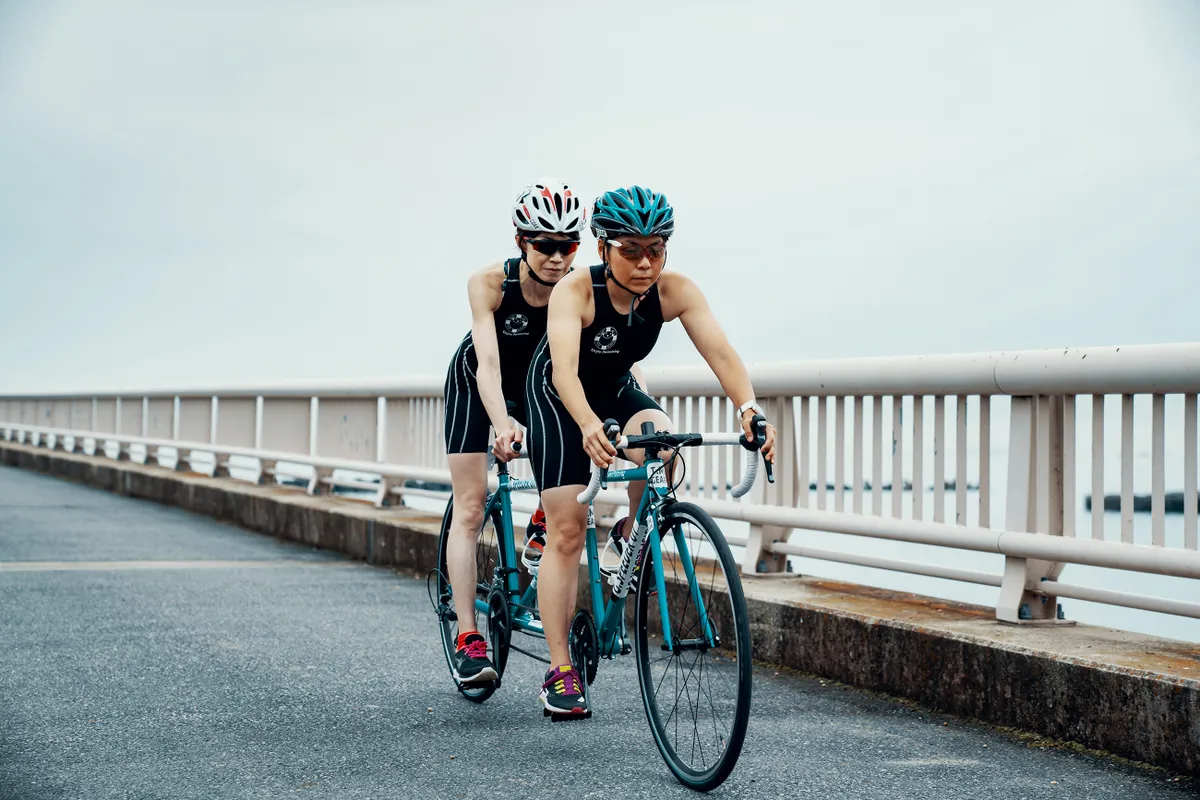
Traditional tandems are a two-person version of a bicycle, with a ‘captain’ steering at the front and a ‘stoker’ offering additional pedal power at the rear.
Tandems now come in a range of shapes and sizes. These include side-by-side tandems and tandems where the captain and stoker positions have been swapped, enabling disabled cyclists to enjoy a full view without the need to steer. There are even tandems with ‘trike’ rear wheels, giving extra stability.
Tandems are ideal for able-bodied riders who have either visual or cognitive impairments.
Mission Cycles in Kent sell a ‘piggy-back’ trike, which links to any bicycle, effectively creating a tandem trike. This is a cost-effective and practical way of getting a young person or adult into cycling.
Many tandems will require riders to pedal in sync. If this isn’t preferable, Van Raam and Nijland offer tandems with clutch configurations enabling the riders to pedal at their own speed.
With a range of options available, it’s worth looking at which type of tandem would be best for you. A typical tandem with the captain at the front might be fine, but a side-by-side tandem or a tandem with recumbent seats might be preferable. A tandem that accommodates riders of different heights might be better still.
Balance is worth keeping in mind. A tandem with a trike rear or trunk and lumbar support might make the stoker feel more comfortable. Riders might also need a low step-through to make it easier to get on the tandem.
Buying a specialist adaptive tandem can also offer greater space and more upright seating positions.
Handcycles
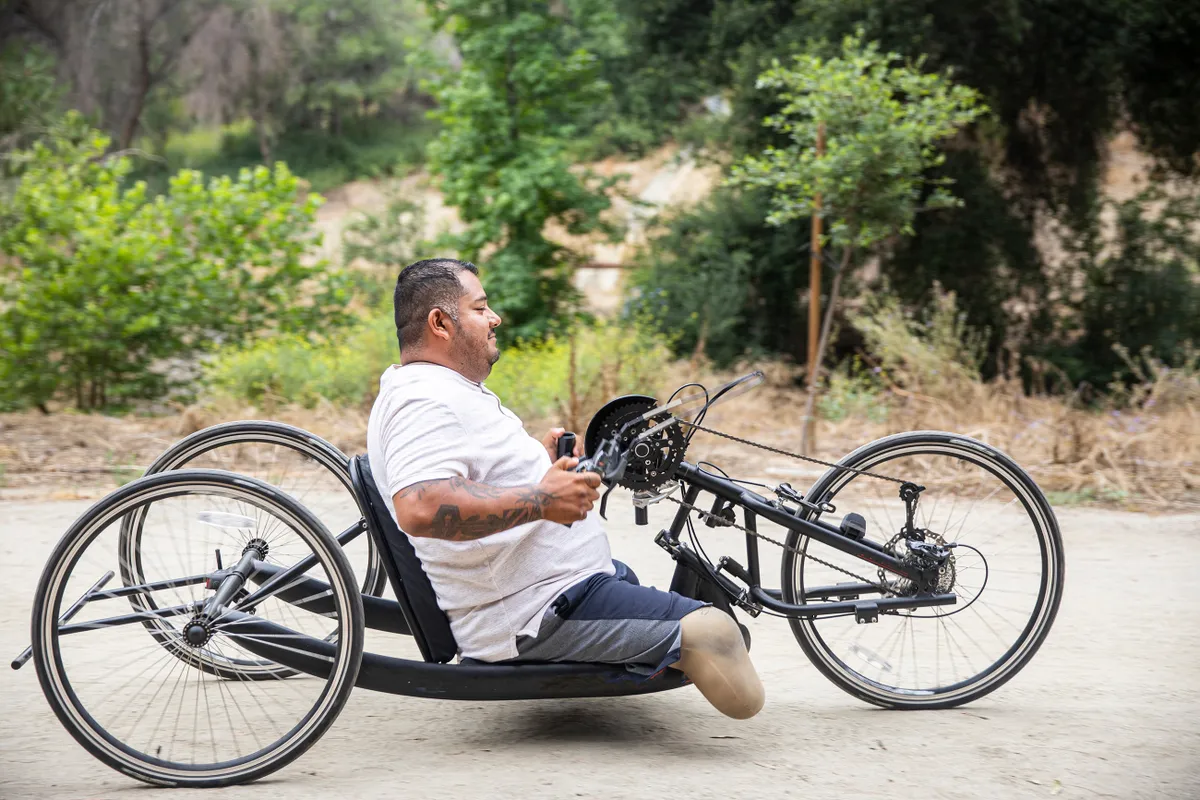
For riders with reduced lower-body strength or paralysis, handcycles offer a solution to independent cycling.
They can be as simple as a clip-on front wheel and hand-propelled drivetrain, which attaches to your everyday wheelchair or a separate handcycle.
With arms being less powerful than legs, the gear ratio and setup of a handcycle are important.
The hand grips control the steering, braking, gear shifting and propulsion, so getting the correct crank-arm length and pedalling position is crucial to comfort and efficiency.
With handcycles, it’s important to pay attention to wheel size and gear ratios. These can make for easier manoeuvrability, pedalling and wheel traction.
The height of a handcycle will affect how easy it is to move from a wheelchair to the bike. As a general rule, the higher the riding position the easier it will be to transfer across.
Where would you want to ride your handcycle? There are hand cycles for all riding styles, including off-road, time-trial or touring.
Seat style and position can have a big impact on how comfortable a hand cycle is. You might need to find a hand cycle with more trunk support, a more reclined position or a more upright one. It’s worth finding the most comfortable pedal height for your arms, too.
Recumbents
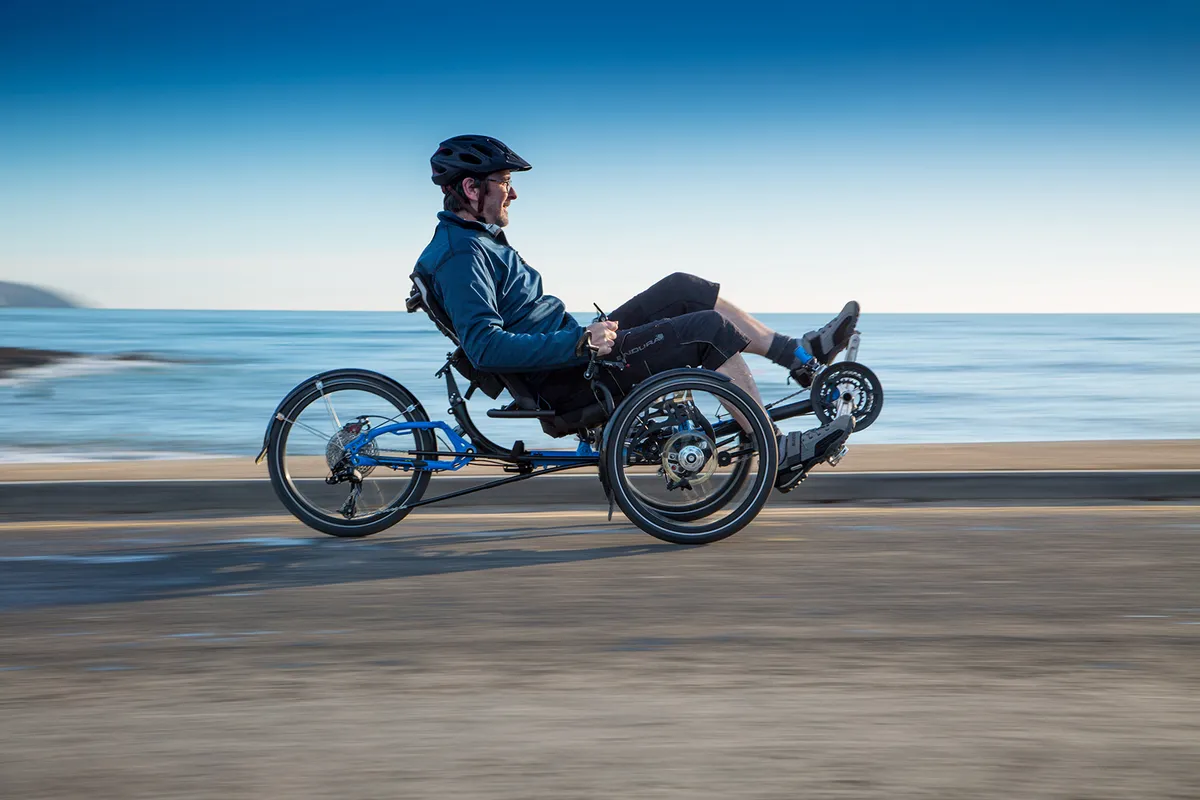
Recumbents are three-wheeled cycles where the rider sits in a reclined position with their legs out in front and on the pedals. Recumbents are controlled via grips on either side of the seat.
Recumbents have wide-reaching appeal. They are often used by neuro-diverse riders, those with back and/or balance issues, and simply riders who prefer the riding position with their heads upright looking forwards.
The low centre of gravity gives greater stability and the seated cockpit provides a sense of security for the rider.
Phil Zschiesche of ICE Trikes says: “There’s no average rider for a recumbent. We have everyone from autistic youngsters who have never been able to cycle a traditional bike to a disabled US military veteran who broke 10 world records on one of our recumbents.”
Fully electric recumbent trikes can be the solution for those with spinal cord injuries who wish to hit the trails as well. North American manufacturer Bowhead Corp has been leading the way, with its adventure ebikes giving riders a chance to return to the trails on fully electric, high-spec, recumbent mountain trikes.
Just like trikes, recumbents are divided into two main types: tadpole and delta. Tadpole recumbents, like tadpole trikes, offer greater stability and corner more securely.
Due to the semi-reclined position, the power you're able to exert using leg muscles is reduced on a recumbent compared to on an upright bike. Investing in a recumbent with an electric motor or easier gear ratios is worth considering if this is a concern.
Like many adaptive bikes, the seat position and style can have a big impact on comfort. There are tandems with upright or more reclined seats, wider seats, harnesses or torso support, so it’s worth thinking about what would be best for you.
Wheelchair tandems and carriers
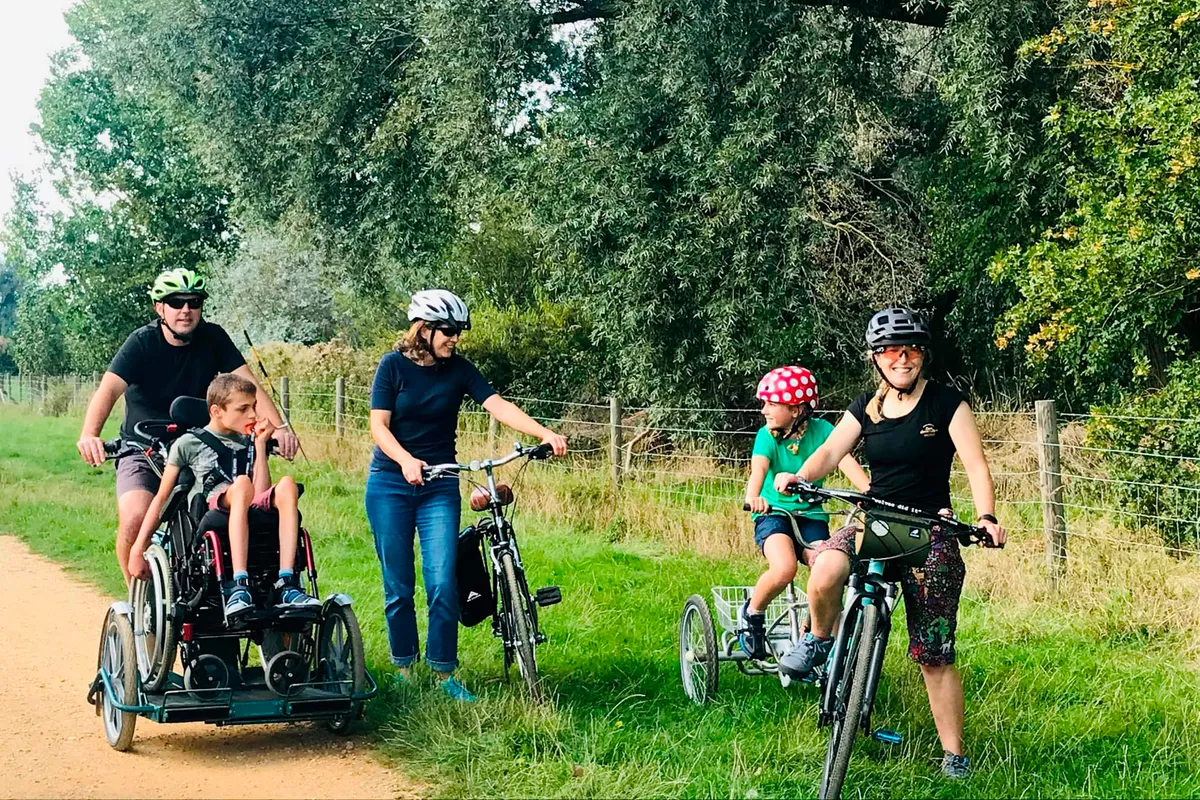
A carrier bike left has space for the rider and their wheelchair.People with full paralysis are still able to enjoy the experience of cycling thanks to specialist tandems. These tandems have a fully supportive seat or simply have space for a rider in their wheelchair, which can be locked in place.
Due to the weight of these bikes, electric assistance usually comes as standard. The joy of these tandems is the wheelchair user is close enough for the able-bodied rider to lean forward and chat to them while still having a panoramic view of the journey. The downside can be passengers get cold easily with no protection from the elements.
Some wheelchair-accessible cycles transport the wheelchair user in their own chair on a platform in front of the bike. Others include a bucket seat for the disabled rider which detaches and acts as a wheelchair when you reach your destination.
It’s worth remembering detachable ‘wheelchairs’ are not crash tested so cannot be used in wheelchair-accessible vehicles.
Transportation of wheelchair tandems can be tricky due to their weight and size.
Other solutions

Sometimes, all you need is a bike that fits your proportions and that’s why the Isla Bikes Joni is so exciting. Designed for riders with disproportionate Dwarfism, the Joni 20 and Joni 24 have low step-throughs, shorter cranks and brake levers. These features are better suited to their riders’ shorter limbs and fingers, as well as their potential joint issues.
Alternatively, you may just need a lighter bike or one with a low step-through.
While Isla Bikes has always focused on lightweight bikes, including its adult models, Van Raam has taken that idea a stage further with its Comfort bike. The Comfort bike gives a low step-through and moves the drivetrain forwards so that riders can sit and pedal comfortably while still being able to put their feet on the ground when seated.
Some riders might not even need a dedicated adaptive bike; simple changes to a rider’s existing bike might be all that’s needed.
Neil Stanford, senior mechanic at Get Cycling CIC in York, explains how “moving all the controls to one side of the handlebar can help hemiplegic riders who’ve had strokes for example” or “adding a pendulum crank on one side when a rider has had a knee replacement.”
Electronic groupsets allow gears to be set up for single lever use, but the lightweight shifting controls can also help those with arthritis.
Buying an adaptive bike
If you’re looking to invest in an adaptive bike, it’s best to speak to a dealer or adaptive bike specialist.
“Often people come in with an idea of what they think will work, they try it out and find it’s not right so they go for something else,” says Stanford.
Prices range from £500 for a piggy-back trike to thousands for more specialist bikes. High prices can sometimes make the prospect of getting an adaptive bike seem tricky. However, there are several options to get you started.
Charities and not-for-profits (CICs) are one option. Look out for adaptive cycling groups in your area, where you can often access bikes for free or for an inexpensive membership fee. Whilst you may be limited to one area to cycle, it will give you the chance to try a range of bikes and meet other riders.
If you are registered as disabled in the UK, then you are eligible for VAT relief on products that are designed or adapted for your disability, and this includes adaptive bicycles. Manufacturers and dealers are normally able to give you more information on this.
Funding is another option. Some charities offer grants to help buy adaptive bikes. Look for organisations that are geographically or medically specific as well as those that support adults with disabilities.
Two adaptive bike case studies
These two case studies show how adaptive bikes can make a huge difference to individuals and families.
Caroline Mumford explains how a Van Raam OPair electric wheelchair bike gives her son Thomas the riding experience of being on a bike and helps make cycling a family activity.
Vicky Balfour explains how a piggy-back trike and Jorvik Jet-E trike open up different possibilities for cycling.
Thomas Mumford’s Van Raam OPair electric wheelchair bike by Caroline Mumford

Thomas is 15 and he is described as having quadriplegic cerebral palsy, so he has lots of involuntary movements but has good head control.
When Thomas and his sister were little, we used a cargo bike to get around town, as they could both go in it.
It was on a holiday in Cambridgeshire that we first came across the Van Raam wheelchair bikes. Thomas was about five or six and we didn’t move forwards with it, as we had a younger toddler as well and it wasn’t the right time.
When Thomas’ younger sister, Emily, became an independent cyclist we looked at the wheelchair bike options again so we could all go out cycling together.
When we were ready to get a bike, Ashfield Special Needs came to the house and gave us a demo of the Van Raam OPair.
It was an easy decision for us as Thomas can do a ‘standing transfer’, which means we don’t need to lift him. This meant that the OPair with a bucket seat was an option.
I felt it was better for him to get the riding experience of being on the bike rather than simply being a passenger in his wheelchair. It’s a standard tub seat that you add harnesses to depending on the movements of the individual.
The kind of rides we love most are the everyday, simple rides to the shops or into town like every other family.
You can detach the front ‘chair’ from the bike so you can wheel around your destination, which makes the bike super-flexible. For example, if we’re going on holiday and we take the bike, we can cycle somewhere and spend a whole day out.
The biggest downside with a lot of off-road chairs and equipment is that it’s not crash-tested. We’re campaigning to get this changed because it means that Thomas cannot travel in the detachable chair from the bike.
He needs to travel in a wheelchair, so you need to be able to transport the bike and a separate chair. That often means going with two large vehicles.
Thomas loves being out on the bike. He likes the wind on his face and a different view. It gives him the feeling of movement and speed, which he doesn’t get in his manual chair. For us, we love it as it’s another activity as a family.
We love small, local, spontaneous rides, that don’t require much planning. The bike increases the mileage we can do from home without having to get in the car. We love cycling with friends as well, but that often requires a bit more planning.
Doing things together as a family is so important when you’re living with disabilities. We’ve always made things work but it got harder as he got older. Now both kids are independent so we can always cycle together.
We tend to find places to ride through friends, family and local knowledge. Some of the paths are tricky because of their camber – that’s harder than the surface itself.
We often add Changing Places facilities as a feature on a ride, which gives peace of mind. Choosing destinations with Changing Places facilities means you can plan an activity around that place.
We were lucky to get our electric wheelchair bike funded by a local charity called Cantiacorum, which is geographically specific for our area, but there are lots of other sources.
CeCe Balfour’s Mission piggy-back pull-along trike and Jorvik Jet-E by Vicky Balfour

CeCe was born with a genetic mutation and autism, which means she has a mix of physical and cognitive diversity. CeCe has bi-lateral squints, which mean she doesn’t see things in 3D. This has a knock-on effect for her balance and mobility.
After a disastrous attempt at family cycling when CeCe was four, where we put her in a trailer, we almost gave up on cycling. This was until another family gave us their old Mission Cycles pull-along trike with adaptations like trunk support and weighted pedals that mean you can always get your foot in place.
We were initially hesitant about the trike and it sat in the garage for a long time before I was brave enough to just get it attached to my bike and see what CeCe thought.
The pull-along trike came with trunk support but we soon realised that she didn’t need that and was able to control her upper body while sitting on the trike.
At first, we cycled around the yard in front of our house, then we tried the local seafront before we eventually got brave and ventured up the hill to a local cycle path.
After that, the world was our oyster. We took the pull-along to visit family, to ride to the beach and in the woods. CeCe relished her new identity as a cyclist and I had tears of joy in my eyes on most rides because we had finally found an activity that we could all enjoy as a family.
After a while, CeCe progressed to riding independently on a Jorvik Jet-E trike, purchased thanks to funding from Cantiacorum.
It’s taken a while to come to terms with the fact that we get different things from companion cycling with CeCe on the pull-along and independent cycling on the trike. Neither is wrong, but they’re different.
Having cognitive and visual impairments means that CeCe finds it mentally exhausting cycling independently: we go slower and only about three to six kilometres at a time. This makes it perfect for a pootle along the seafront or by the river.
With companion cycling on the pull-along, with another person controlling the bike, CeCe can join family bike rides of up to 25 to 30km, which is so much fun and means we can have a real adventure. Unlike a fixed tandem, when CeCe’s legs get tired, she simply stops pedalling!
It is hard to put into words the positive impact that cycling has had on CeCe and our family, but we are thrilled we tried it and were able to find the right solutions for us.
CeCe and I now run Resilient Riders Canterbury, an inclusive cycling group that offers rides monthly for anyone in the area looking for a fun bike ride where no one gets left behind and there’s always cake!
